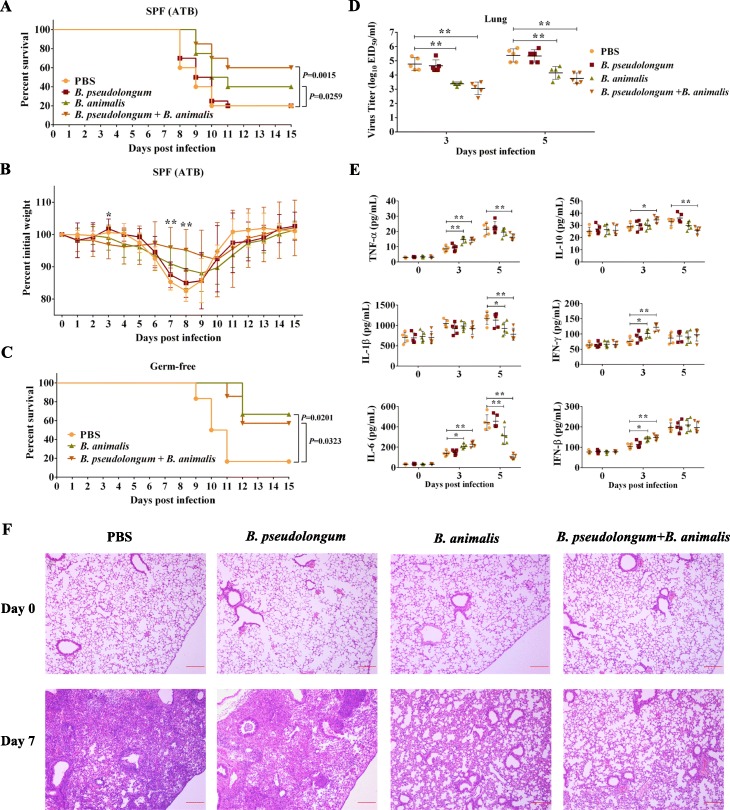Fig. 4.
The oral administration of survival-associated microbes protects the recipient against virulent H7N9 virus infection. Survival rate (a) and weight loss (b) of mice treated with an antibiotic solution (ATB), administered survival-associated microbes or PBS, and then infected with GX (n = 20 mice per group). The administered microbes were B. pseudolongum alone, B. animalis alone, or a combination of B. pseudolongum and B. animalis. Significant difference of weight changes (P < 0.05) only occurred between group combination gavage and PBS gavage on days 3, 7, and 8. c Survival rate of germ-free mice administered B. animalis alone (n = 6), the two-bacterium combination (n = 7), or PBS (n = 6) and then infected GX. Virus titers (d), cytokine concentrations (e), and histological examination (H&E staining) (f) of the lungs of ATB-pretreated mice after GX infection. Before infection, the ATB-pretreated mice were administered with B. pseudolongum alone, B. animalis alone, the two-bacterium combination, or PBS, with 15 mice in each group. Five mice per group were randomly sacrificed for the collection of the lungs on days 0, 3, and 5 post-infection. The lung homogenate was prepared for the determinations of virus titers and cytokine concentrations. In addition, 24 ATB-pretreated mice were randomly divided into four groups and also treated as described above. On days 0 and 7 post-infection, 3 mice per group were randomly sacrificed. The lungs were collected for the histological examination. Representative images are shown. The data are presented as the mean ± SD. Statistics for weight changes, virus titers, and cytokine concentrations were two-way ANOVA. *P < 0.05, **P < 0.01. Statistics in survival assay were done with the log-rank (Mantel-Cox). All experiments were performed at least twice under similar conditions and yielded similar results

